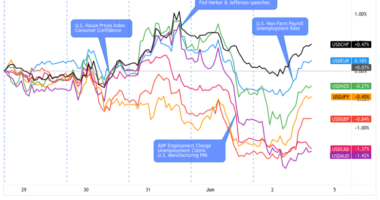
Heads up, Aussie traders!
The monthly jobs report is scheduled for release on Thursday (Jan. 20, 12:30 am GMT), and it could be worth watching.
Here’s my trading guide for this news event.
What happened last time?
- November hiring jumped by 366.1K vs. 203K consensus
- November jobless rate fell from 5.2% to 4.6% vs. 5.0% forecast
- October employment change downgraded to show 56K in job losses
Australia’s November jobs report blew market expectations out of the water, as it printed an impressive 366.1K increase in hiring – its largest single monthly gain on record.
This was also a pretty strong rebound from the earlier 56K in job losses and enough to bring the unemployment rate down from 5.2% to 4.6%.
Although majority of the employment gains were from a 237.8K jump in part-time hiring, full-time jobs still saw a decent 128.3K increase. Underemployment improved to 7.5%, which is its lowest level since 2014.
Of course this jobs pickup was mostly spurred by the easing of restrictions in NSW and Victoria during the month, so it remains to be seen whether the gains can be sustained or not.
What’s expected this time?
- Hiring in December probably rose by 60K
- Unemployment rate likely dipped from 4.6% to 4.5%
Number crunchers are still estimating positive jobs momentum in December, as they predict a 60K gain in hiring for the month. This might be enough to take the unemployment rate down a notch to 4.5%.
As in the previous release, Aussie traders will likely pay closer attention to the underlying components more than the headline figures.
Leading indicators have some clues:
- ANZ’s job ads slipped by 5.5% in December after a 9.9% gain
- IHS flash manufacturing PMI fell from 59.2 to 57.4, although the jobs component still ticked higher
- IHS flash services PMI fell from 55.7 to 55.1, but firms also reported a faster pace of hiring
By the looks of it, there is a good chance that the rebound in hiring from the previous month likely carried on in December, especially as most Australian states eased restrictions further during the month.
A stronger than expected release could give Aussie bulls hope that the RBA might move closer to tightening policy soon while a downside surprise could drag AUD lower.
If you’re planning on trading this event, don’t forget to keep tabs on the average volatility of AUD pairs, which could serve as a guide in setting entries and exits.









